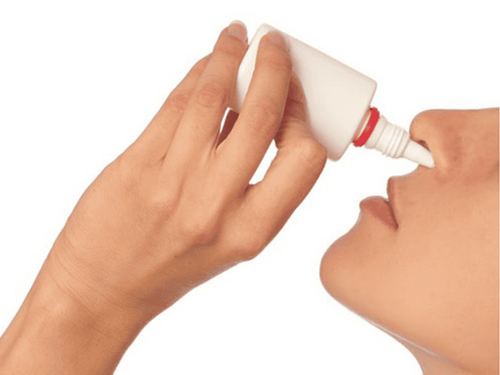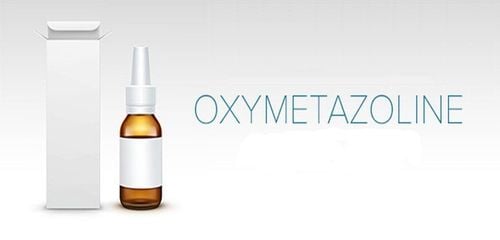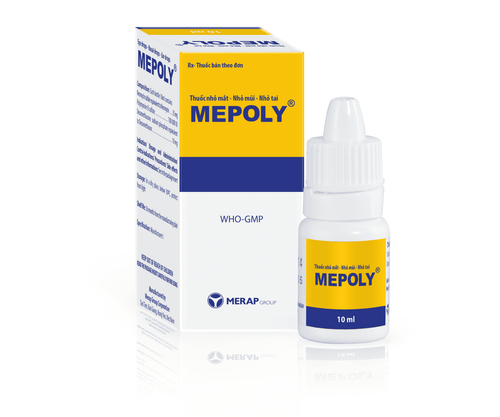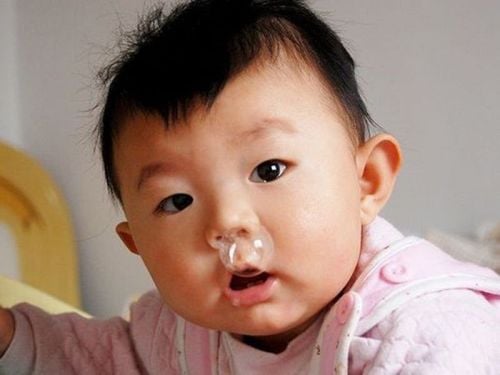This is an automatically translated article.
The article was professionally consulted by Doctor Tran Mai Phuong - Pediatrician - Neonatologist - Department of Pediatrics - Neonatology, Vinmec Central Park International General HospitalSinusitis in children, if not treated promptly, can cause many complications that seriously affect the health and development of children. The treatment of sinusitis in children requires the cooperation and perseverance of both doctors and parents, combining treatment of symptoms, causes and prevention of the risk of recurrence.
1. The danger of sinusitis in children
Sinusitis is a common disease in children, in fact, many cases of sinusitis in infants have been detected clinically. This is a condition in which the lining of the paranasal sinuses is damaged by the impact of pathogens such as bacteria, viruses, fungi, smoke, chemicals, allergens,...Sinusitis in children will cause symptoms such as persistent low-grade fever, cough, bad breath, or vomiting, runny nose, green or yellow nasal discharge, children over 6 years of age have symptoms of headache, fatigue, swelling around the eyes . Depending on the course of the disease, sinusitis in children is divided into acute sinusitis (lasting less than 4 weeks), subacute sinusitis (lasting 4-8 weeks) and chronic sinusitis (lasting 8-12 weeks). ).
Sinusitis in children, if not treated promptly, will cause many complications that seriously affect the health and development of children such as: chronic pharyngitis, nasal polyps, otitis media with fluid stasis, bronchitis chronic laryngitis, optic neuritis, orbital inflammation,... Some other dangerous complications such as meningitis, brain abscess, encephalitis,... can be life-threatening if not young. timely intervention. Therefore, when a child shows signs of the disease, parents should quickly take the child to a medical facility for definitive treatment from the very beginning, to avoid the risk of serious illness turning into complications.

Bệnh viêm xoang ở trẻ sẽ gây ra các triệu chứng như sốt nhẹ kéo dài, ho
2. Diagnosis of sinusitis in children
2.1. The paraclinical means Besides the clinical symptoms, the doctor can let the child perform a number of paraclinical techniques to strengthen the diagnosis such as:Nasal endoscopy: In patients with sinusitis, when examining Nasal endoscopy showed a lot of thick mucus on both sides of the nasal cavity, flowing from the back of the nose to the throat, edematous nasal mucosa. Blondeau-Hirtz position X-ray showed blurred sinus images, thickened sinus mucosa and air-fluid levels in the sinuses. CT Scan helps to clearly see the damaged sinus mucosa and changes in the anatomical structure of the sinuses, thereby helping doctors to orient in surgery, this method is especially meaningful in pediatric patients with inflammation. Chronic sinus requires surgical intervention. Magnetic resonance imaging (MRI), sinus ultrasound helps diagnose sinus diseases. Take samples from the nasal sinuses, nasopharyngeal and nasopharynx to culture bacteria and make antibiotic maps. 2.2. Differential diagnosis To effectively treat sinusitis in young children, it is necessary to differentiate between sinusitis and other diseases with similar clinical symptoms such as:
Upper respiratory tract infections: Upper respiratory tract infections are common. only lasts for 5-7 days, while sinusitis in children lasts a long time, persists and can develop into chronic sinusitis. Allergic Rhinitis: Children with allergic rhinitis often develop the disease at the time of the impact of the allergen, in episodes. Children with itchy nose, continuous sneezing, clear runny nose, no bad smell, stuffy nose on one side or both sides, the child must breathe through the mouth.
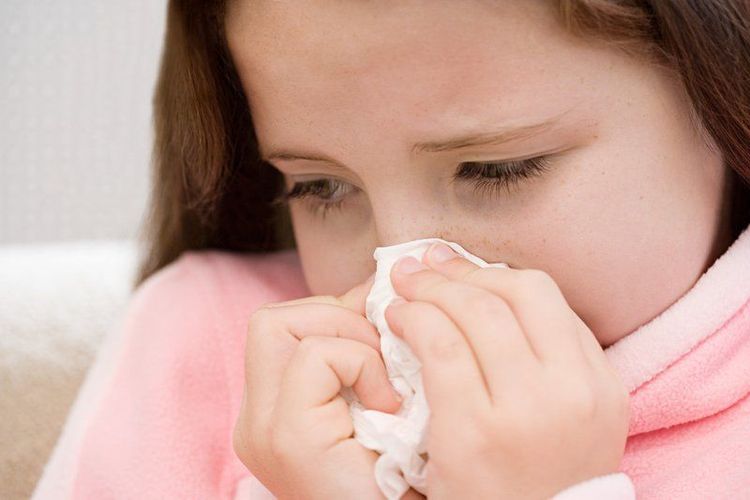
Bệnh viêm xoang ở trẻ em nếu không được điều trị kịp thời sẽ gây nhiều biến chứng
3. Treatment of sinusitis in children
The treatment process for sinusitis in young children should ensure the following principles:Relieve clinical symptoms to improve the health and quality of life of the child. Controlling the causes of diseases are infectious agents such as bacteria, viruses, fungi,... Preventing allergic factors such as pollen, house dust, cigarette smoke, .. Treating underlying diseases such as immunodeficiency, gastroesophageal reflux... and treatment of anatomical abnormalities of the nose and sinuses, if any. Treatment of acute sinusitis in children is mainly medical treatment. Depending on each specific case, the doctor will prescribe antibiotics, nasal decongestants to help open the sinuses, topical corticosteroids to reduce edema of the nasal mucosa. Simultaneously moisten the nose, loosen the secretions to help the hairs move better, combine with washing the nose, sucking the nose daily.
If the child has chronic rhinosinusitis or acute rhinosinusitis but recurs more than 4-6 times/year, it is necessary to take the child to an otolaryngologist, depending on the condition that the child may be indicated. Continue medical treatment or require surgical intervention.
Cases that may be indicated for surgery are:
There are signs of chronic sinusitis on CT scan images. Sinusitis recurs more than 6 times in a year Child has nosebleeds, nasal congestion, and no nose. smell, headache, ear discharge, tinnitus. Mucus stagnates in the nose, pus flows down the back wall of the throat. Detecting nose with structural deformities, polyps, VA hypertrophy,.. In surgical cases, it is necessary to apply conservative surgery rather than radical cure. During surgery, if VA is found to be inflamed or overblown, it can be combined with treatment right in the surgery.
During the treatment of sinusitis in children, it is important to note:
Follow the doctor's treatment instructions, do not arbitrarily stop the drug, change the medicine without consulting the doctor. Scheduled follow-up visits for the doctor to monitor the progress of the disease, change the treatment regimen if necessary. Keep children's living environment clean, regularly clean the house, avoid pets, smoke in the house, keep children away from polluted and dusty areas. Let children wear masks when going out to limit breathing dust and other pollutants. Avoid letting children breathe dry air, increase the humidity where they live and study with humidifiers. In addition, parents should also add some supporting foods containing lysine, essential micro-minerals and vitamins such as zinc, chromium, selenium, B vitamins,... to help fully meet their needs. requirements for nutrients while supporting the immune system, enhancing resistance, reducing the risk of upper respiratory tract infections, sinusitis, bronchitis, flu,...
Please visit the website often Vinmec.com and update useful information to take care of your baby and family.
Please dial HOTLINE for more information or register for an appointment HERE. Download MyVinmec app to make appointments faster and to manage your bookings easily.





